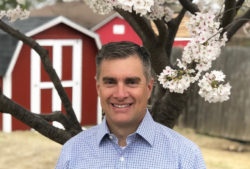Join us for the next lecture in a series of presentations led by experienced practitioners across the country in support of barn-preservation education! This lecture will be hosted via Zoom and is free to all who register.
To register, send an email to RSVPwith your name and location (city/county, state) to info@barnalliance.org by Sunday, October 25th. We will send an email with the details to call or login to all registrants on October 27th
“Oklahoma’s Historic Barns”
Presenter: Dr. Brad Bays
Keywords: Barn Types, Upland South Culture, Native American Agriculture, Historic Construction Methods, Barn Survey, NRHP Evaluation, Criteria A and C
Historic barns in Oklahoma are disappearing for a variety of reasons, yet they serve as the most vivid, multigenerational markers of local landscapes, reminding us of the inevitability of economic, technological, environmental, and cultural changes which all places undergo.
Between 2009 and 2014, Brad Bays conducted a survey of the state’s historic barns for the Oklahoma State Historic Preservation Office and the Oklahoma Historical Society. The OK/SHPO’s objective was to document at least 10 historic barns in each county over the span of five years.
Five years later, Brad had logged around 55,000 miles, mostly on county roads, in each of the state’s 77 counties. He had visited more than 5,000 sites and documented just under 1,000 properties for the Oklahoma Landmarks Inventory (OLI), the state’s archive of properties that are National Register-eligible or warrant further study for possible NR listing. Of these, about 100 properties were deemed NR-eligible. The experience had taken him to every corner of every county in the state, and better awakened him to Oklahoma’s substantial diversity. This presentation will provide a geographical overview of the forms and materials of Oklahoma’s surviving historic barns.
The survey discovered rare types of barns not previously known to exist, as well as yet-unclassified types. Log barns of every type can be found throughout the former Indian Territory, and they reflect cultural ties to the Upland South and the effects of prolonged inaccessibility. Native stone and masonry barns are found clustered in pockets around the state, and bank barns tend to be associated with ethnic German settlement.

Brad Bays is Associate Professor of Geography at Oklahoma State University. He holds a BA from Oklahoma State University (1989), an MS from the University of Tennessee-Knoxville (1991), and a PhD from the University of Nebraska-Lincoln (1996), all in Geography. He has been on the faculty at Oklahoma State University since 1995. His research and teaching interests center on the historical geography and agricultural history of the southern Great Plains, especially his home state of Oklahoma.
